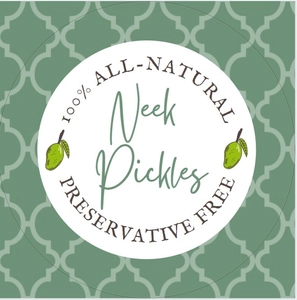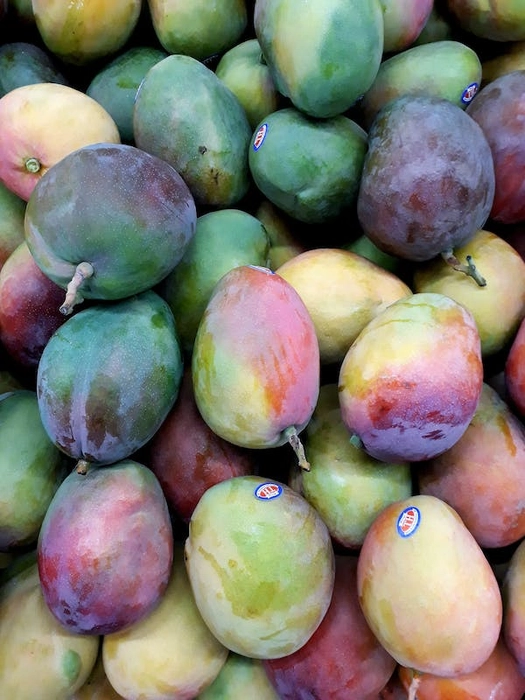
Mango is a popular fruit which is produced by the tropical tree called Mangifera Indica. It’s originated can be traced in the region between north-western Myanmar, Bangladesh and north-eastern part of India. The mango tree has been grown in Southeast Asia since ancient times which has given rise to two types of modern mango cultivators called the Indian type and Southeast Asian type. Some other species of the same genus Mangifera also produce edible fruits which are called ‘mangoes’.
Mangoes are cultivated by hundreds of cultivators around the world. Depending on them the mango fruit differs in size, shape, color and sweetness. Mango is the national fruit of India, Pakistan and Philippines. The mango tree is the national tree of Bangladesh.
About the name
The word mango originated in the 16th century from the Portuguese word, 'manga', from the Malaysian, 'mangga', and the Tamil, 'mankay'. The scientific name of the mango tree, 'Mangifera Indica' means a plant which bears mangoes in India.
Description of Mango
The mango tree grows to about 30-40 mts tall. These trees have a long life and some of it’s specimens are about 300 years old. The ripe fruit of the tree differs based on the cultivation and type and they are yellow, orange, red or green accordingly. The fruit has a singular flat and oblong pit which can be fibrous or hairy and does not separate easily from the pulp. The fruits are round, oval or kidney-shaped. The skin is like leather, waxy and smooth and has a mild fragrance in colors green, yellow, orange and red. The ripe fruit has a distinctive resinous sweet smell.
Taxonomy of Mango
The mangoes were initially found in a region between north-western Myanmar, Bangladesh and north-eastern India. Mangoes diverged into two genetically different groups called the subtropical Indian group and the tropical Southeast Asian group starting from their place of origin. The Indian group is characterized by mono embryonic fruits while the Southeast Asian group bears poly embryonic fruits.

Cultivar varieties of Mango
There are hundreds of mango cultivars. In the mango orchards these cultivars are grown to improve the process of pollination. Most of the cultivars are mono embryonic and must be propagated by grafting or they may not give the desired result. A common mono embryonic cultivar is called ‘Alphonso’ which is a popular export variety and is also considered ‘the king of mangoes’.
The cultivars which excel in one climate may not grow in another one automatically. For eg, the Indian cultivars like ‘Julie’ which is a good variety in Jamaica needs several fungicide treatments annually to stay protected from the fungal disease Anthracnose of Florida. The Asian varieties on the other hand are resistant to this disease.
The current world market is flooded by the cultivar called ‘Tommy Atkins’ which is a seedling of Haden which was first cultivated in 1940 in Florida and was rejected by the researchers in the start. But now cultivators and importers globally have voted for this cultivar because of qualities like excellent productivity, long shelf life, high disease resistance, size, color and easy transportability. In general the ripe mangoes have an orange-yellow or red peel and juicy interior flesh for eating.
Mangoes were introduced to East Africa by the Arab and Persian traders from tropical Asia in the 9th and 10th centuries. The Moroccon traveller Ibn Battuta brought it to Mogadishu and it was spread around the world during the Colonial Era. Then the Portuguese empire spread the mango to Goa and West Africa. From West Africa it was spread to areas of Brazil to the Caribbean and Mexico.
Cultivation of Mango
Mango is grown in the frost-free tropical and warmer subtropical climatic areas. It is grown extensively in South and South east Asia, East and west Africa, tropical and subtropical Americas and also the Caribbean. They are also grown in Andalusia, Spain mainly the Malaga province as its subtropical climate allows their growth abundantly. It is also grown in the Canary Islands of Spain.
Uses of mango

Culinary
The ripe mangoes are generally sweet though the taste and texture of the flesh may differ according to the cultivar type. For eg, the Alphonso have a soft, juicy pulp which is similar to that of an overripe plum while others like Tommy Atkins are firmer having a fibrous texture. The skin of unripe, pickled or cooked mango is eatable but it can cause lip dermatitis, gingiva etc.
Mangoes are used in many different cuisines. The sour, unripe mangoes are used to make chutneys, pickles, are added to dals and many side dishes in the Indian cuisine. The raw mango is used to make a summer drink called Aam Panna which is very tasty and popular in India. The mango pulp is used to make jellies. It is also used to prepare Mango Lassi by mixing ripe mangoes or mango pulp with curd and sugar which is consumed throughout South Asia in abundance. Some kind of curries are also made using ripe mangoes. A dish called Aamras is made of mango pulp and sugar or milk and is had with Indian flatbread or chapatis and pooris. The ripe mango pulp is also used to make a jam called Mangada. Andhra Avakaya is a pickle made from raw, pulpy and sour mango along with fenugreek seeds, chilly powder, mustard powder, salt and groundnut oil. Raw mango is also used to make Chunda, a sweet and spicy grated mango delicacy.
Mango is used to make murabbas or fruit preserves, amchur which is a powder made from dried and powdered unripe mango and pickles. The ripe fruit is also added to cereal products like muesli and oat granola. It is used to make juices, smoothies, ice-cream, fruit bars, pies and sweet chilly sauce. In central America the raw mango is eaten mixed with salt, vinegar, black pepper and hot sauce.
The ripe mango is mashed and used as a topping on ice-creams or blended with milk and ice to make mango shakes. A dish is made with sweet glutinous rice and coconut which is served with sliced ripe mangoes called Mango Sticky rice. In many parts of Southeast Asia mangoes are pickled with fish sauce and rice vinegar. Green mangoes are also used to make mango salad with fish sauce and dried shrimp. The raw green mangoes are eaten in the form of salad too. In Philippines green mangoes are commonly eaten with baggong or salty fish or shrimp paste, salt, soy sauce, vinegar and chillies. Mango float and mango cake are famous desserts of Philippines. Then dried strips of sweet and ripe mangoes are combined with seedless tamarind to make Mango rind. Mangoes are also used to make juices, mango nectar and as a flavouring in mango ice-cream and sorbets.
Nutrition
A raw mango has 84% water, 15% carbohydrates, 1% protein and almost negligible fat content. A 100 gm serving of raw mango has 60 calories.
Cultural significance of Mango
Mango is the national fruit of India. It is also the national tree of Bangladesh. In India the harvest and sale of mangoes is done during the months of March-May.
About Mango Pickle

The mango pickle is a traditional Indian condiment prepared with raw green mangoes, spices and oil. In India pickles are liked and wanted as an appetizer with every meal. Be it any dish pickles are always welcomed with delight and appetite. And amongst all the pickles the ones made with mango are an instant delight for everyone. Mango pickles are made in different ways in the different states of India. Some of the mango varieties famous in India are mango chunda, Punjabi mango pickle, Rajasthani mango pickle, Maagaya, Avakaya and Vadu mango pickle. Mango pieces are pickled in spices and oil in big ceramic pots which are called Bharani. The pickles get its rich taste with the process of fermentation of it’s ingredients with time. Avakaya is one of the famous pickles made in Andhra Pradesh and Telangana.
About NEEK Mango Pickle

The NEEK Mango Pickle is a unique, delicious, spicy and rightly tangy preparation which is made using the best and choicest raw materials combined along with spices and oils to create an authentic delicacy sure to jazz up your minds and taste palettes alike. It has zero synthetic preservatives and has white vinegar in it’s place to provide it a rich and flavourful taste along with a long shelf life of 5 years. It can stay preserved till five years if simple precautions are taken like not letting the pickle come in contact with water and used spoons. The pickle carries a unique taste and has been made in the most hygienic environment possible. It is surely worth a try from all pickle lovers and will really stay in the top of your memory list for the next day grocery shopping, you bet. So just try this rich and world-known delicacy prepared by NEEK Pickles and give perfection and excellence a sweet nudge, only to remind them that NEEK Pickles are in the league too!!!


